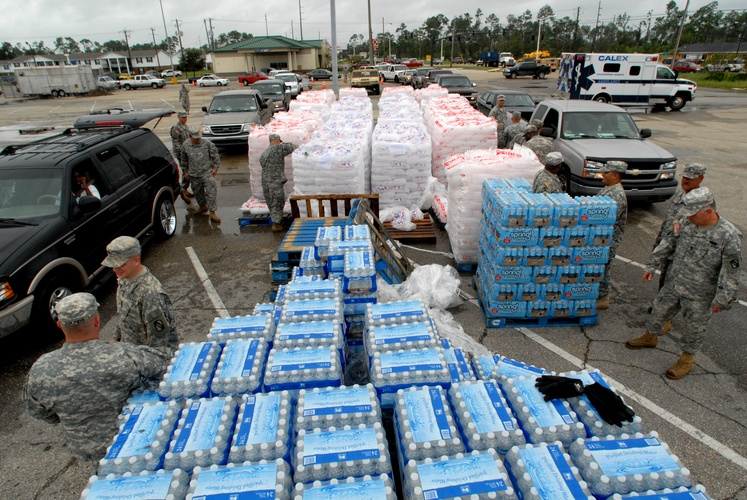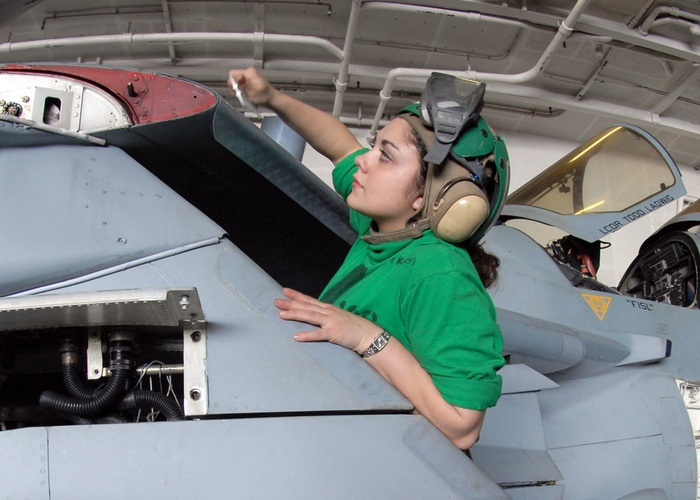U.S. Customs & Border Protection Aviation Ops & Assets: Crucial Assets for Border Security
One of the most important agencies in the Department of Homeland Security is the U.S. Customs and Border Protection Agency, also known as CBP or just Border Patrol. While it is commonly known as the Border Patrol, this is actually just one element of the CBP, although it is a significant part of it.
In fact, the Border Patrol is one of the largest law enforcement agencies in the U.S. with around 19,000 agents, and the CBP in all totals some 60,000 employees. One of the more important assets that CBP possesses is its aerial and marine assets. With thousands of miles of border and waterways to patrol, there is absolutely no other way to effectively survey the border besides aerial and marine assets.
We’re going to talk about the CBP air and marine operations, particularly using an unmanned aircraft system in CBP Air, and manned aircraft missions in as well.

Understanding Air and Marine Operations
Our focus is on the aviation side of the house; however, CBP roles them up into one arm of the agency, so we can’t completely segregate the two wings.
Definition and Purpose
First, here are a couple of quick bullets on who the AMO is and what they do for our national security.
- CBP Air and Marine Operations (AMO) is a federal law enforcement component within U.S. Customs and Border Protection (CBP), an agency of the United States Department of Homeland Security (DHS).
- AMO’s mission is to protect the American people and the nation’s critical infrastructure through the coordinated use of air and marine assets to detect, interdict, and prevent acts of terrorism and the unlawful movement of people, illegal drugs, and other contraband.
The AMO is home to a huge inventory of aerial assets that include:
- Fixed-wing aircraft
- Rotary-wing aircraft
- Unmanned aerial vehicles (UAVs)
The aerial fleet numbers over 240 aircraft, making CBP one of the largest air forces in the world!
The CBP uses aerial assets for a few purposes, but the most common job is surveillance. The border stretches for thousands of miles, much of which is not accessible by roads.
Fixed-wing assets are best used to cover large areas, as they can fly at high altitudes and target intruders. Rotary-wing assets are used to cover territory with great speed that either can’t be covered by vehicle or boat or when speed is of the essence. Their fleet of UH-60 Blackhawk helicopters is used for both surveillance and inserting Border Patrol agents on the scene of interdictions.
History and Evolution
The AMO started in its earliest days as a boat-borne operation to bust violators of prohibition. Aircraft were used to a very limited degree in these early years (1920s and 1930s) largely because the airplane was still in its infancy.
World War II was the catalyst that launched everyday use of the airplane. Airplanes advanced by generations in just a few short years, and also, there were enormous surpluses of airplanes available after the war ended. The Customs Service took the opportunity to protect our borders further and implement the use of surplus airplanes significantly in their operations, increasing endurance and operating efficiency against threats. Obviously, distance was less of an issue as interdiction efforts were greatly increased with CBP air assets.
Their techniques and equipment changed a lot over the years, much of which is mirrored in military aviation assets, which makes sense: a good chunk of the CBP air fleet is made up of surplus military aircraft. This is a good policy for them to keep because many (if not most) of their pilots come over from the military and are already type-rated. Not to mention the high availability of parts for their aircraft since they were already used in military fleets and missions.
Effective Strategies for Border Protection
CBP air and marine are two asset groups that are critical to countering domestic security threats.

Intelligence Gathering and Analysis
Boots on the ground are the end result of all CBP efforts. Along the way, though, is a huge support apparatus that monitors and analyzes continually. The AMO is largely responsible for data collection, and which point that information is handed to be refined, and strategy formed around it.
Air Operations
Okay, now it’s time to get down to the meat and potatoes of CBP aviation.
What Aviation Assets Does CBP Fly?
The CBP flies a mix of aerial assets, such as fixed-wing, rotary-winged (helicopters), and UAVs.
Fixed-Wing Aircraft
- P-3 Orion
- Role: Maritime patrol and surveillance
- Capabilities: Equipped with advanced radar and sensor systems for long-range tracking and surveillance, primarily used for drug interdiction and counter-terrorism operations.
The P-3 is a veteran of the U.S. Navy and has recently been phased out and replaced with the P-8, but it has found homes in both the CBP and NOAA conducting a wide range of missions.
- DHC-8 (Dash 8)
- Role: Coastal and maritime patrol
- Capabilities: Short to medium-range aircraft used for surveillance and reconnaissance, often deployed in coastal and maritime environments.
- Cessna C-206
- Role: Light surveillance and reconnaissance
- Capabilities: It is utilized for border patrol, aerial surveillance, and support of ground units. It is known for its flexibility and cost-effectiveness.
- King Air 350ER
- Role: Multi-role surveillance
- Capabilities: Equipped with high-tech sensors and communications systems for a bunch of missions, including search and rescue and law enforcement support.

The CBP King Air 350ERs are very similar to the MC-12 Liberty, which is great for overall government procurement efforts.
Rotary-Wing Aircraft
- UH-60 Black Hawk
- Role: Multi-mission utility helicopter
- Capabilities: It is used for various operations, including border patrol, search and rescue, and law enforcement support. It is highly versatile and equipped for night operations and challenging environments, and has a long wartime history of success.
Again, as a bonus, there are thousands of experienced Blackhawk pilots available for hiring, and the supply system for the Blackhawk is robust.
- AS350 A-Star
- Role: Light utility helicopter
- Capabilities: Ideal for aerial surveillance, reconnaissance, and support operations, it is known for its agility and ability to operate in diverse conditions.
Unmanned Aerial Systems (UAS)
- MQ-9 Predator some text
- Role: Persistent surveillance and reconnaissance
- Capabilities: Equipped with advanced radar, camera, and sensor systems for long-duration flights and detailed surveillance. Provides real-time data and intelligence for border security and counter-terrorism operations.
The Predator is a military vehicle acquired by CBP Air and Marine, so there are no shortages of parts for either aircraft. CBP air has wisely adopted at least half of its assets from military channels, which makes for a strong supply chain and reduces weak links.
Airborne Surveillance and Detection
The mission is usually surveillance and detection. Customs and Border Protection spends a lot of time and money actively monitoring its AORs, and indeed, our border is one of the most closely watched places on earth.
Most of the aviation assets in Customs and Border Protection are not intended for interdiction but are instead in commission to monitor.

Airborne Interdiction and Pursuit
However, sometimes detection turns into pursuit. For this, CBP AMO is equipped to intercept on land or water. Their aerial interdiction assets are rotary-wing, as they can carry an interception team just about anywhere they need to go and land anywhere. However, fixed-wing assets are still a go-to for pursuit since they can follow and orbit for hundreds of miles and hours on station if necessary, which is something helicopters are not particularly good at. Also, fixed wings are much more adept at staying out of small-arms range should that ever be an issue.
Parting Thoughts
Like many other law enforcement agencies, the CBP turns to aviation assets for much of their surveillance and intelligence-gathering work. These aircraft put in long hours to keep tabs on our borders, and they will eventually break down. Greenwood Aerospace is the government procurement specialist you need to partner with. We are here for
- Military flight ops
- Federal government agencies
- State government agencies
Give us a call at (580) 762-2580, or start an online quote today!


.svg)


.png)


